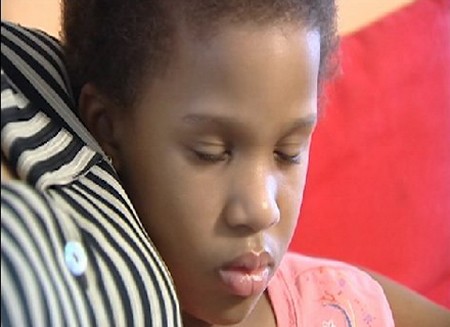Best Way to Deal With Sickle-Cell Anemia in Children
Many children who have sickle-cell anemia wet their beds. In 1995, T. Ernesto Figueroa and a group of researchers at the South Florida Health Sciences Center found that about 30 percent of the center’s 91 children who had sickle-cell disease had been wetting the bed since infancy. Sickle-cell anemia is an inherited disease of the red blood cells. For years people thought that the disease occurred only in people of black African descent, but we know now that it also occurs in other groups, including people from parts of Italy, Greece, India, Arabia, and elsewhere.
Sickle-cell anemia begins early in life. Symptoms in about half of its victims start showing between the ages of six months and two years. In others, symptoms start showing later.
What is this disease? In a person with sickle-cell anemia, the hemoglobin (oxygen-carrying substance in the red blood cells) is defective; it does not get enough oxygen. This causes its molecules to combine with each other in a process called “polymerization.” The red blood cells lose their flexibility to the point of becoming rigid, and, instead of round, they become sickle-shaped. A round shape permits easy flow, but the sickle shape, together with the rigidity, causes the red blood cells to clump together and block the flow of blood in the small blood vessels. The tissues that are normally supplied by the blocked vessels are damaged or destroyed because they are cut off from the oxygen and nutrients normally carried by the bloodstream. The process causes weakness and a great deal of pain. Any child with sickle-cell anemia needs the care of a physician.
In virtually all cases, the disease destroys the ability of the kidneys to concentrate urine, and the output of urine becomes greater than normal. The individual must awaken at night to urinate or wet the bed. (D. R- Readett reported that parents of sickle-cell children who bedwet consider these children more difficult to awaken than sickle-cell children who don’t bedwet.)
What symptoms alert you to the presence of this disease? Among the earliest is swelling of the fingers and toes, then thickening of the bones of the hands and feet. The symptoms of anemia are present: paleness, weakness, fatigue, fainting, shortness of breath, and palpitations of the heart (when the heart tries to compensate for the anemia by pumping blood faster than normal).
A child with sickle-cell anemia is small for his age, and several times a year endures “sickle-cell crises,” periods of severe pain in the abdomen, bones, joints, or muscles, accompanied by fever. These crises often require hospitalization.
Although there is still no cure, if your child suffers from this disease, the pain and other related problems can be treated. Blood transfusions and various drugs are used. You may want to inquire about hydroxyurea, a substance that was reported by a number of researchers, including S. Charache at Johns Hopkins School of Medicine, to be helpful in reducing the frequency of sickle-cell crises.
You can ask your child’s physician to try giving the synthetic hormone desmopressin to control your child’s bedwetting. In 1995, T. Ernesto Figueroa and his associates reported in the Journal of Urology that they gave desmopressin to 10 children with sickle-cell anemia, and six of them experienced a complete or partial relief from bedwetting.
And you may wish to look into the possibility of bone marrow transplant. A. Ferster and a group of researchers in Belgium reported in the British Journal of Haematology on the curative effects of bone marrow transplants in five children who had severe forms of the disease. Another researcher, Y. Beuzard, reported in 1992 in the French journal Revue du Practicien that bone marrow transplants had cured 30 patients.
There is still hope for a significant cure: At least one biotechnical company is working on the development of a gene therapy for sickle-cell anemia.
An additional note: If your child has sickle-cell anemia and daytime symptoms of urinary urgency in addition to nighttime frequency or bedwetting, then, besides other measures, you may want to ask the doctor to look for other possible urinary problems as well. Your child may have a urinary problem that is separate from the disease.
Categories
Advertisements
Recent Articles
 How to Understand Bed Sizes – A Small Guide
How to Understand Bed Sizes – A Small Guide How to Select Some Must Have Kitchen Accessories
How to Select Some Must Have Kitchen Accessories Best Way to Change a Car Tire
Best Way to Change a Car Tire Best Way to Write an Affirmation
Best Way to Write an Affirmation Best Way to Take Charge of Your Financial Life
Best Way to Take Charge of Your Financial Life Best Way to Survive a Party When You Don’t Know Anyone
Best Way to Survive a Party When You Don’t Know Anyone Best Way to Stop Self Sabotaging Yourself
Best Way to Stop Self Sabotaging Yourself Best Way to Start Journal Writing
Best Way to Start Journal Writing Best Way to Speak with a Powerful Voice
Best Way to Speak with a Powerful Voice Best Way to Simplify Your Life
Best Way to Simplify Your Life Best Way to Respond to a Put-Down
Best Way to Respond to a Put-Down Best Way to Reduce Acne Breakouts
Best Way to Reduce Acne Breakouts Best Way to Recover from Dining Disasters
Best Way to Recover from Dining Disasters Best Way to Quit Your Job Gracefully
Best Way to Quit Your Job Gracefully Best Way to Make Your Own Website
Best Way to Make Your Own Website



Leave a Reply